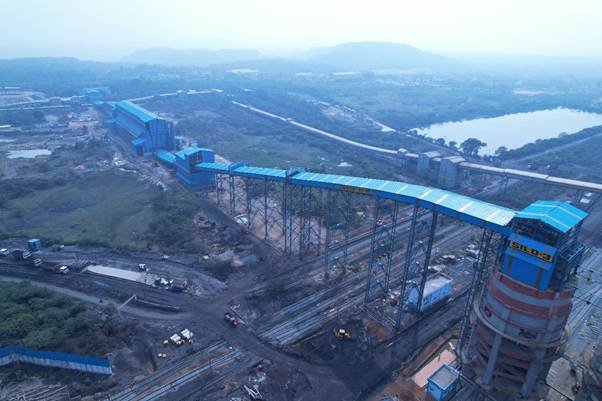Industry gets fundings and initiatives support.

Manufacturing of heavy-duty defence hardware in India is gaining momentum with the government accelerate supporting initiatives.
Among the leading manufacturers is Hindustan Aeronautics Limited (HAL) which is making Sukhoi-30 MKI, Hawk, and Dornier 228 (DO 228) aircraft under License from foreign Original Equipment Manufacturers (OEMs) for which Technologies have been fully absorbed to the extent of Transfer of Technology (ToT) contracts.
Also, Light Combat Aircraft “TEJAS” and Advanced Light Helicopter (ALH) Dhruv are indigenously designed and developed.
Indigenization of components is a continuous process involving development and qualification.
New technologies especially, advanced avionics, advanced mechanical systems, structured design capabilities; several world class high value ground test rigs have been established.
HAL has also involved private industries to supply airborne items, aircraft/helicopter sub-assemblies and assemblies which can directly fit on aircraft/helicopter.
The Government has taken various steps to encourage indigenization and self-reliance in defence, said Minister of State for Defence Dr. Subhash Bhamre in a written reply to Jose K. Mani in Lok Sabha on 11 August 2017.
Under the ‘Make in India’ initiative, the Government’s initiatives are:
i. A new Defence Procurement Procedure (DPP), 2016 has been promulgated by the Government to take effect from 1 April, 2016 whereby a new category of procurement ‘Buy {Indian-IDDM (Indigenously Designed, Developed and Manufactured)}’ which has been accorded top–most priority for procurement of Capital equipment. Besides this, preference has been accorded to ‘Buy (Indian) and ‘Buy & Make (Indian)’ categories of capital acquisition over ‘Buy (Global)’ and ‘Buy and Make (Global)’ categories. The ‘Make’ Procedure has been simplified with provisions for funding of 90% of development cost by the Government to Indian industry and reserving projects not exceeding development cost of Rs.10 Crore (Government funded) and Rs.3 Crore (Industry funded) for Micro, Small and Medium Enterprises (MSMEs).
ii. Foreign Direct Investment (FDI) Policy has been revised. FDI up to 49% is allowed through automatic route and beyond 49% under Government approval route wherever it is likely to result in access to modern technology or for other reasons to be recorded.
iii. Indian licensing regime for Indian manufacturers has been liberalized and most of the components/parts/sub-systems have been taken out from the list of Defence products requiring industrial license which has resulted in reduction in the entry barriers for new entrants in this sector particularly SMEs. The initial validity of industrial license has been increased from three years to 15 years with a provision to further extend it by three years on a case to case basis.
iv. Issues related to level playing field between Indian and foreign manufacturers and between Public sector & Private sector have also been addressed. These include Exchange Rate Variation (ERV) protection for Indian vendors.
v. Offset guidelines have been made flexible by allowing change of Indian Offset Partners (IOPs) and Offset components even in signed contracts. Foreign Original Equipment Manufacturers (OEMs) are now not required to indicate the details of IOPs and products at the time of signing of contracts. ‘Services’ as an avenue of offset have been re-instated.
vi. In HAL, an R&D Corpus of 10% of the operational profit after tax is earmarked for R&D activities both in-house and with private vendors.
vii. Strategic partnership model has been formulated by the Government in May, 2017 to focus on substitution of imported spares, ensure greater self-reliance and dependability of supplies, essential to meet national security objectives.
viii. Certain components of some of the defence equipment of Russian origin have been identified and published on the web for identifying Indian private sector companies for indigenous manufacture under Joint Ventures/Transfer of Technology agreements with Russian OEMs.
Defence sector is a “user driven” sector and the Defence Forces are actively involved in various policies & procedures related to procurement, indigenous design, development & manufacture of defence equipment, co-development & co-production with foreign OEMs, thus contributing towards ‘Make in India’, he said.
Some of the major areas, where defence personnel are involved, are listed below:
‘Make Procedure’: ‘Make’ procedure as given out at Chapter-III of Defence Procurement Procedure (DPP)-2016, envisages involvement of Defence personnel at various stages of development of a defence equipment. The ‘Make’ projects are identified through a consultative process with involvement of members from Services Head Quarters (SHQs). Project Management Unit (PMU) headed by Service officer, established at SHQs, is responsible for monitoring the implementation of ‘Make’ projects of respective SHQ. The Integrated Project Management Team (IPMT) mandated to steer the Make project, is also headed by Service Officer.
Technology Development Fund (TDF) Scheme: TDF scheme launched by the Government aims at funding the development of defence and dual use technologies that are currently not available with the Indian defence industry, or have not been developed so far, thus creating an Eco-system for enhancing cutting edge technology capability for Defence application. The scheme envisages constitution of Empowered Committee and Technical Committee with representation from Armed Forces as members, which are involved in identification of technologies, Project Monitoring & Mentoring activities.
‘Buy & Make (Indian)’ and ‘Buy & Make’ categories of capital acquisition under DPP, envisage tie-up between Indian Vendor/ Indian Production Agency & foreign OEM, for indigenous production of defence equipment involving Transfer of Technology (ToT) of critical technologies to promote ‘Make in India’. The Defence Personnel are engaged at various stages of procurement to progress the projects categorized under these categories.
Army Design Bureau (ADB): SHQ (Army) has established an Army Design Bureau (ADB) in August – 2016 as a single point coordination with Industry & Academia. The mandate of ADB, inter- alia is to act as a central repository of technical know-how, to bring forward the innovation undertaken by field formation, to generate long-term research requirement for Indian Army etc.
In addition, a large number of personnel from the Armed forces are posted in DRDO (Defence Research & Development Organisation) to provide impetus to design & development of projects of the Armed forces, thus contributing to indigenization process, said Dr Bhamre. fii-news.com









